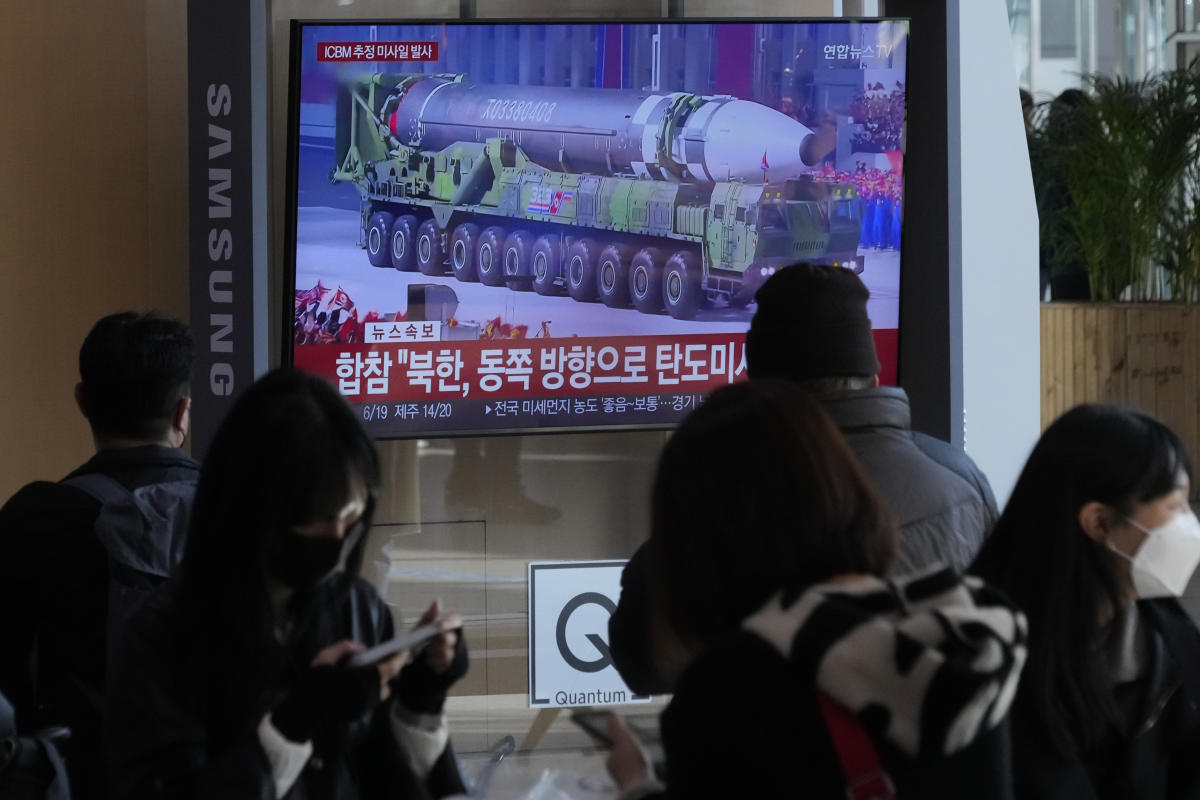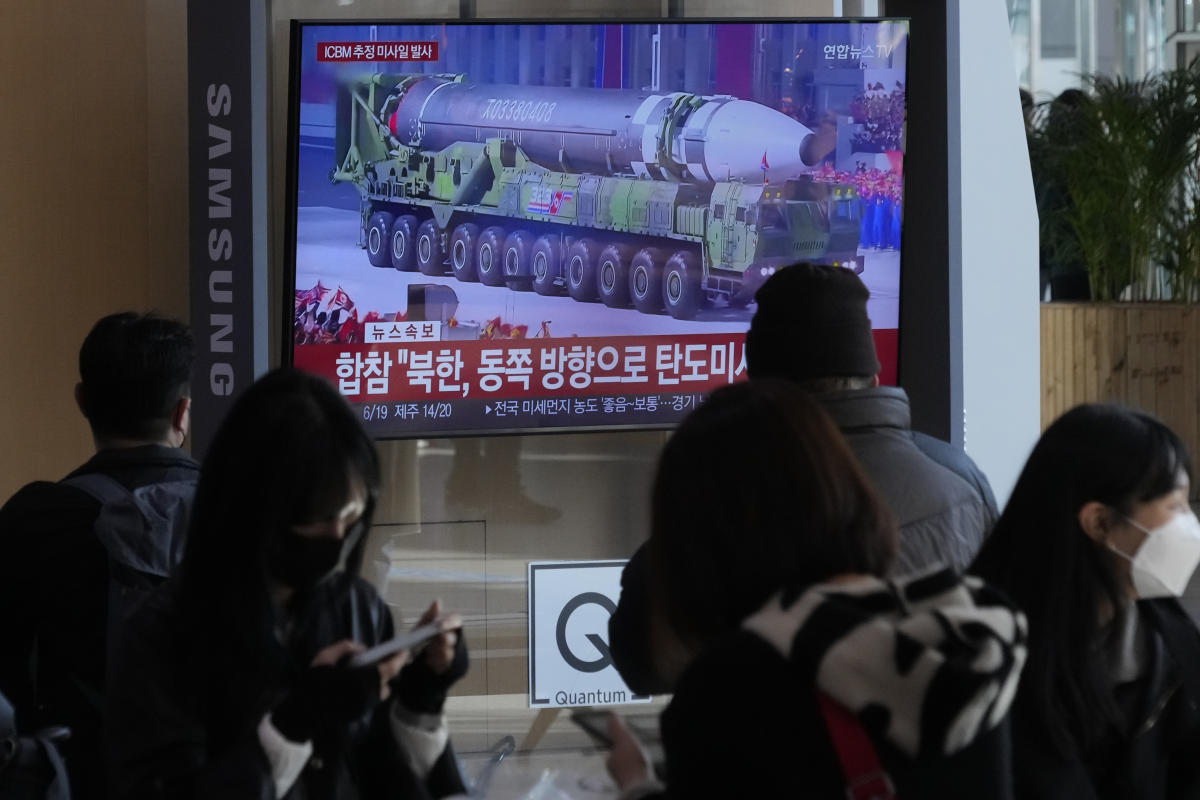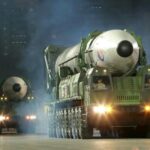
SEOUL, South Korea (AP) — North Korea fired an intercontinental ballistic missile that landed near Japanese waters Friday in its second major weapons test this month that showed a potential ability to launch nuclear strikes on all of the U.S. mainland.
The United States quickly slammed the launch and vowed to take “all necessary measures” to guarantee the safety of its mainland and allies South Korea and Japan. Vice President Kamala Harris will separately meet with leaders of Japan, South Korea, Australia, New Zealand and Canada who are attending a regional forum in Bangkok to discuss North Korea’s recent ballistic missile launch.
The North’s ongoing torrid run of weapons tests aims to advance its nuclear arsenal and win greater concessions in eventual diplomacy and they come as China and Russia have opposed U.S. moves to toughen sanctions aimed at curbing North Korea’s nuclear program.
South Korea’s Joint Chiefs of Staff said it detected the ICBM launch from North Korea’s capital region around 10:15 a.m. and the weapon flew toward the North’s eastern coast across the country. Japan said the ICBM appeared to have flown on a high trajectory and landed west of Hokkaido.
According to South Korean and Japanese estimates, the North Korean missile flew about 6,000-6,100 kilometers (3,600-3,790 miles) at a maximum altitude of 1,000 kilometers (620 miles).
Japanese Defense Minister Yasukazu Hamada told reporters the altitude suggests the missile was launched on a high angle. He said depending on the weight of a warhead to be placed on the missile, the weapon has a range exceeding 15,000 kilometers (9,320 miles), “in which case it could cover the entire mainland United States.”
U.S. National Security Council spokesperson Adrienne Watson said the launch “needlessly raises tensions and risks destabilizing” regional security while showing the North’s prioritizing of unlawful weapons programs over the well-being of it people. He said President Joe Biden was briefed over the launch.
“Pyongyang must immediately cease its destabilizing actions and instead choose diplomatic engagement,” Watson said. “The United States will take all necessary measures to ensure the security of the American homeland and Republic of Korea and Japanese allies.”
Hamada, the Japanese defense minister, called the launch “a reckless act that threatens Japan as well as the region and the international community.”
South Korea’s Joint Chiefs of Staff called the launch “a grave provocation and serious threat” to undermine international and regional peace and security. It said South Korea maintains readiness to make “an overwhelming response to any North Korean provocation” amid close coordination with the United States.
After being briefed over the launch, South Korean President Yoon Suk Yeol ordered officials to boost a trilateral security cooperation with the United States and Japan and implement unspecified deterrence steps that were previously agreed upon with the United States. Yoon also ordered officials to push for strong international condemnations and sanctions on North Korea, according to his office.
North Korea also launched an ICBM on Nov. 3, but experts said that weapon failed to fly its intended flight and fell into the ocean after a stage separation. That test was believed to have involved a developmental ICBM called Hwasong-17. North Korea has two other types of ICBM — Hwasong-14 and Hwasong-15 — and their test-launches in 2017 proved they could potentially reach parts of the U.S. homeland.
The Hwasong-17 has a longer potential range than the others, and its huge size suggests it’s designed to carry multiple nuclear warheads to defeat missile defense systems. Some experts say the Nov. 3 test showed some technological progress in the development of the Hwasong-17, given that in its earlier test in March, the missile exploded soon after liftoff.
It wasn’t immediately known if North Korea launched a Hwasong-17 missile again on Friday or something else.
In recent months, North Korea has performed dozens of shorter-range missile tests that it called simulations of nuclear attacks on South Korean and U.S. targets. But it had halted weapons launches for about a week before it fired a short-range ballistic missile on Thursday.
Before Thursday’s launch, the North’s foreign minister, Choe Son Hui, threatened to launch “fiercer” military responses to the U.S. bolstering its security commitment to its allies South Korea and Japan.
Choe was referring to President Biden’s recent trilateral summit with Yoon and Japanese Prime Minister Fumio Kishida on the sidelines of a regional gathering in Cambodia. In their joint statement, the three leaders strongly condemned North Korea’s recent missile tests and agreed to work together to strengthen deterrence. Biden reaffirmed the U.S. commitment to defend South Korea and Japan with a full range of capabilities, including its nuclear arms.
Choe didn’t say what steps North Korea could take but said that “the U.S. will be well aware that it is gambling, for which it will certainly regret.”
Pyongyang sees the U.S. military presence in the region as proof of its hostility toward North Korea. It has said its recent series of weapons launches were its response to what it called provocative military drills between the United States and South Korea.
There have been concerns that North Korea might conduct its first nuclear test in five years as its next major step toward bolstering its military capability against the United States and its allies.
North Korea has been under multiple rounds of United Nations sanctions over its previous nuclear and missile tests. But no fresh sanctions have been applied this year though it has conducted dozens of ballistic missile launches, which are banned by U.N. Security Council resolutions.
That’s possible because China and Russia, two of the U.N. council’s veto-wielding members, oppose new U.N. sanctions. Washington is locked in a strategic competition with Beijing and in a confrontation with Moscow over its invasion of Ukraine.
___
AP journalist Krutika Pathi contributed to this report from Bangkok. Yamaguchi reported from Tokyo.




